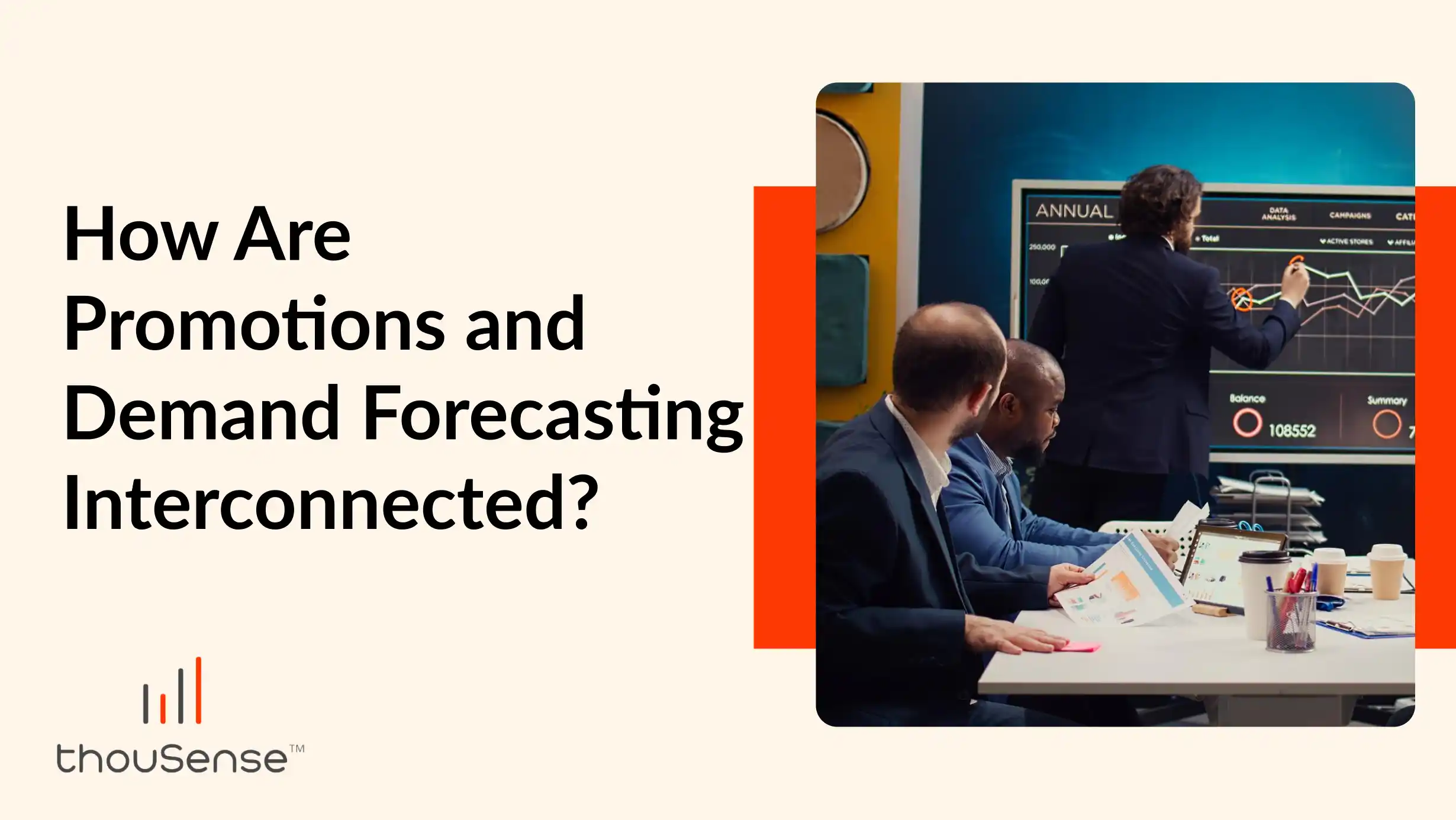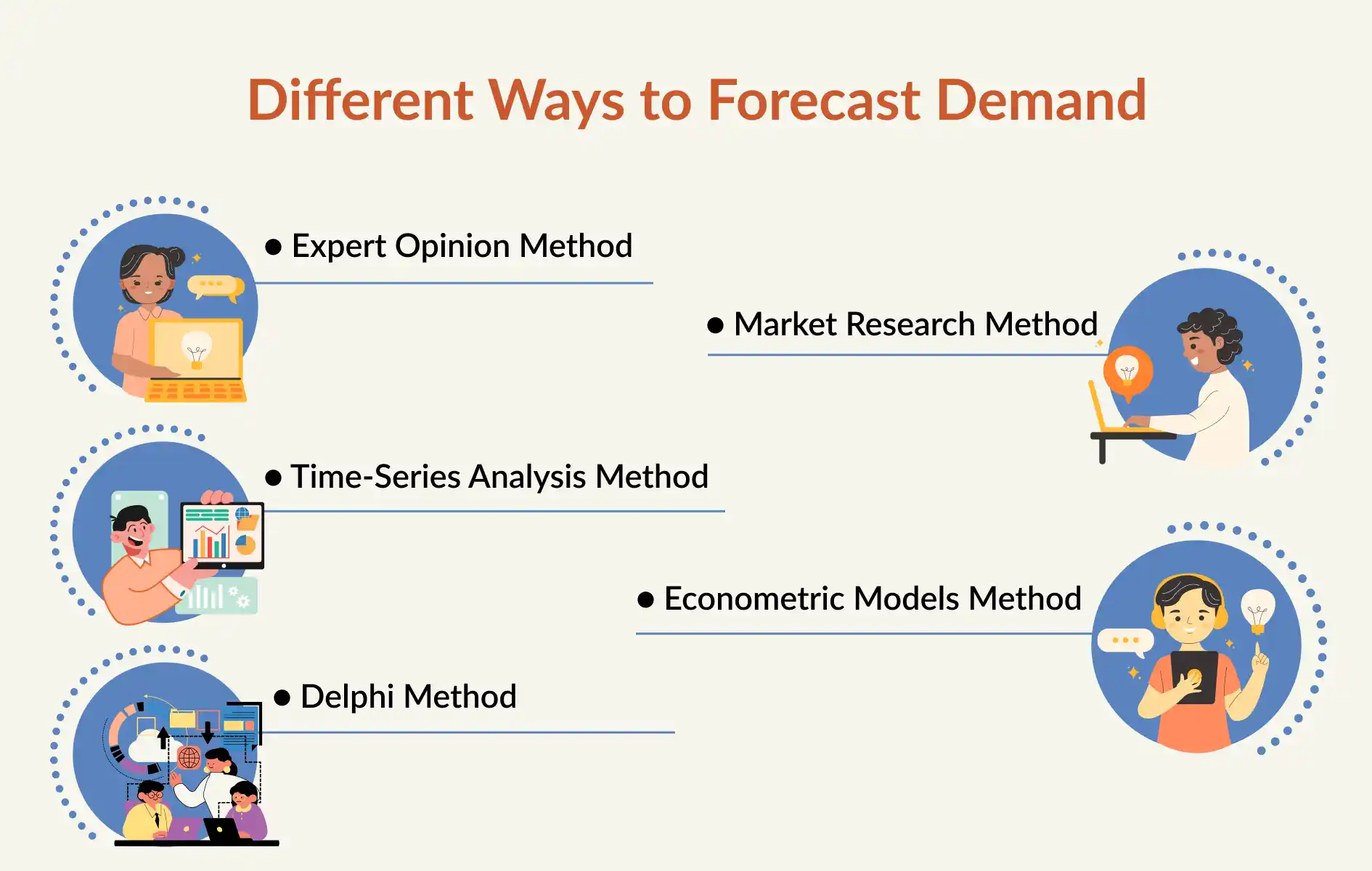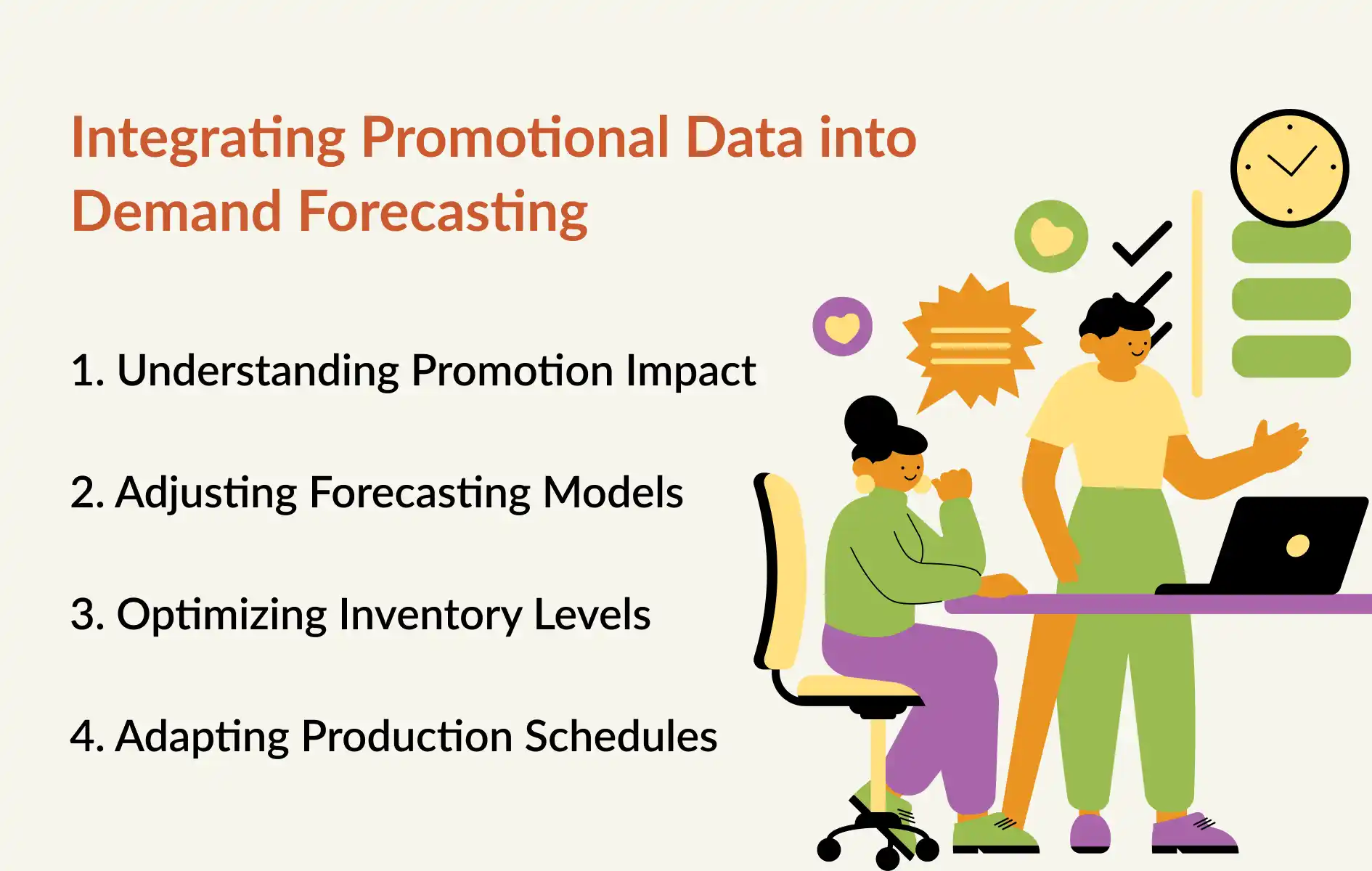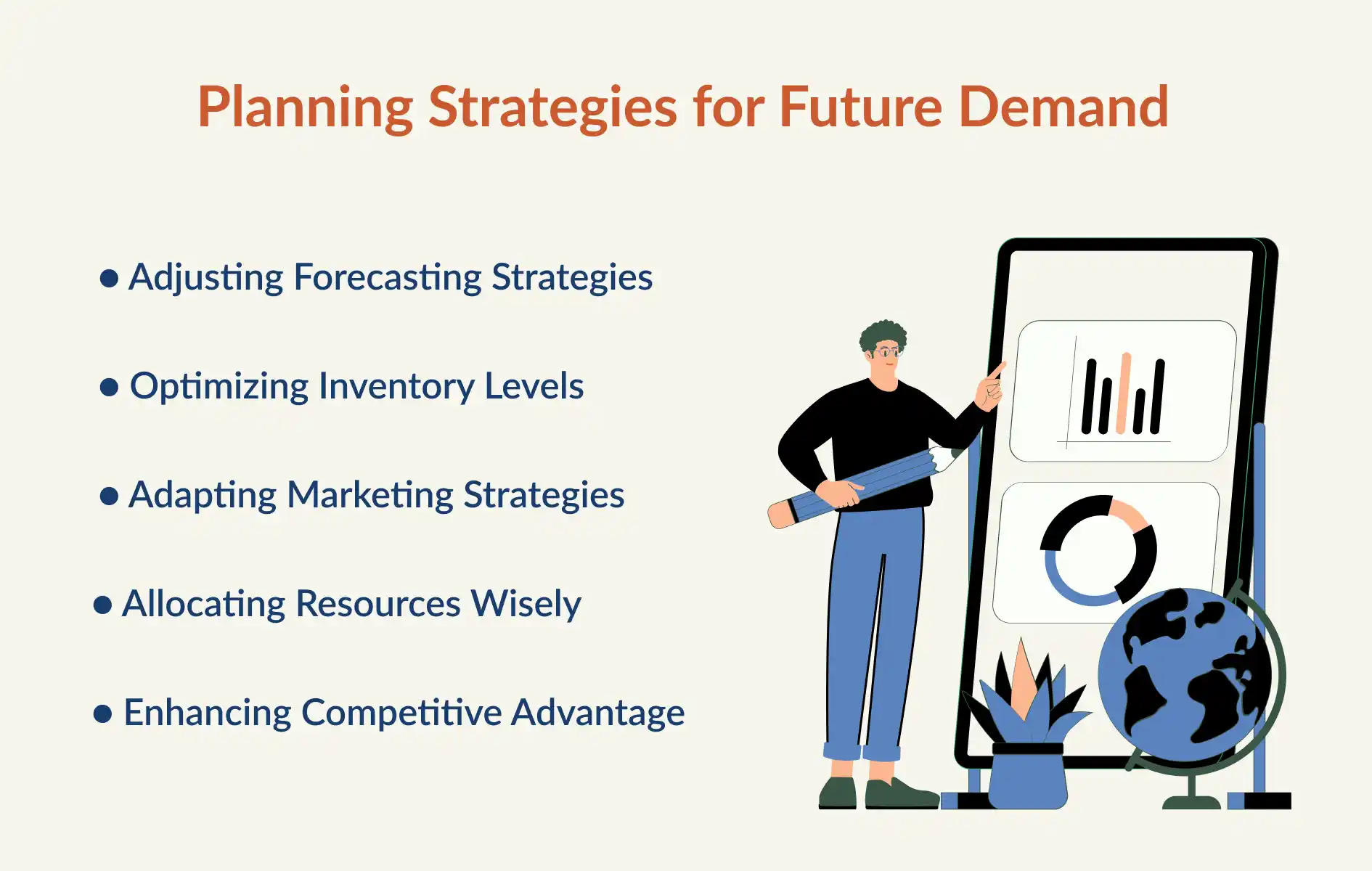How Are Promotions and Demand Forecasting Interconnected? | thouSense

In the world of business, accurately predicting what consumers will want is crucial. Many industries, like retail and manufacturing, rely heavily on demand forecasting to run smoothly, manage their stock well, and stay competitive. But there's another important factor at play here: promotions.
Promotions are the tools businesses use strategically to get consumers interested, boost sales, and make their brand more visible. Whether it's a temporary discount, a "buy one, get one free" deal, or a flash sale, promotions can sway how consumers behave and what they buy. But how exactly do promotions and demand forecasting work together to make businesses successful? Let's find out.
Understanding Demand Forecasting
Understanding demand forecasting is important for businesses to plan effectively and meet customer needs. It includes predicting how much of a product or service customers will want in the future. By looking at past sales, market trends, and other factors, businesses can predict future demand more accurately.
There are different ways to forecast demand. Some of them are:

● Expert Opinion Method: Based on insights from industry experts or professionals.
● Market Research Method: Uses surveys and studies to gather information about consumer preferences and behaviors.
● Time-Series Analysis Method: Analyzes past data to identify patterns and trends over time.
● Econometric Models Method: Applies economic theory and statistical techniques to forecast demand.
● Delphi Method: Involves obtaining predictions from a panel of experts through a series of structured questionnaires or interviews.
Demand forecasting helps businesses make smart choices about production, inventory, and marketing. By knowing what customers will want, companies can use their resources better and keep customers happy.
Overall, understanding demand forecasting helps businesses stay competitive by keeping up with what customers want. It's a key tool for making decisions and planning for the future in today's fast-paced business world.
The Impact of Promotions on Consumer Behavior
Promotions hold a big influence in marketing, impacting consumer behavior and brand perceptions. Understanding this influence is crucial for businesses aiming to engage their target audience. Here's a breakdown of how promotions shape consumer behavior:
● Promotions create a sense of value, prompting consumers to purchase or switch brands.
● They promote a sense of exchange, compelling consumers to make purchases in return for benefits received.
● Discounts and freebies make people feel safer trying something new because it's less risky.
● Fun promotions, such as contests, get people talking about a brand, which helps more people know about it.
● Strategic promotions can enhance brand loyalty.
● They can be leveraged to gain market share and outperform competitors, especially in competitive markets.
● Promotions utilize psychological triggers to influence consumer decisions.
● Balancing short-term sales objectives with long-term brand strength is essential for sustainable success.
Interrelation Between Promotions and Demand Forecasting
The connection between promotions and demand forecasting is vital and intricate. Promotions directly affect how much consumers buy, often leading to increased sales during promotions. This surge in sales data gives businesses valuable feedback, helping them adjust their forecasting models to predict future demand more accurately.
Promotions also offer immediate insights into the effectiveness of marketing strategies. By analyzing how promotions influence consumer behavior, businesses can refine their forecasting methods and spot emerging trends in what customers want.
Links Between Promotions and Demand Forecasting:
● Direct Impact on Sales: Promotions drive consumer interest and boost sales, such as offering discounts or special deals. For instance, a store running a promotion on electronics may see a spike in purchases.
● Using Sales Data for Projections: Businesses can use sales data from promotions to inform their future forecasts. For example, if a restaurant sees a big increase in customers during a promotional event, they can plan better for future events.
● Insights for Marketing Improvement: Promotions serve as feedback for evaluating marketing effectiveness. If a promotion doesn't boost sales as expected, it suggests a need to rethink the marketing strategy. On the other hand, successful promotions validate effective marketing.
● Enhanced Forecasting Accuracy: Analyzing how promotions affect consumer behavior helps businesses make more accurate forecasts. For example, if a promotion consistently leads to more sales for a specific product, businesses can adjust their forecasts accordingly.
● Spotting Consumer Trends: Promotions can reveal trends in consumer preferences. For example, if a promotion for a new product variant gets a positive response and increased sales, it signals a trend that businesses can capitalize on in future marketing efforts.
● Preparing for Future Demand: By using insights from promotions, businesses can better prepare for future demand shifts. For instance, if past data shows that promotions during certain seasons always lead to higher sales, businesses can anticipate and plan for increased demand during those times.
Understanding how promotions and demand forecasting work together is crucial for businesses to refine their marketing strategies, meet consumer demand effectively, and thrive in a competitive market.
Integration of Promotional Data into Demand Forecasting Models
Businesses use sales data from promotions to improve their forecasting models, helping them manage inventory and production better. They study how promotions affect consumer behavior to predict future demand more accurately.
Here's how promotional data is integrated into forecasting models:

1. Understanding Promotion Impact: Analyzing sales data helps companies see how promotions affect what people buy. They look at when promotions happen, how long they last, and what type they are to see if they boost sales.
2. Adjusting Forecasting Models: Companies add promotional data to their forecasting models to predict the extra demand during promotions more accurately.
3. Optimizing Inventory Levels: Forecasting models help companies prepare for increased demand during promotions. They adjust their stock levels so they don't run out of products or have too much left over.
4. Adapting Production Schedules: Promotional data guides production schedules, helping companies plan for changes in demand during promotions. This makes sure resources are used efficiently and production runs smoothly.
Examples of integrating promotional data into forecasting models include:
● Looking at past promotions to find patterns and trends.
● Using advanced analytics to measure how promotions affect sales.
● Using machine learning to predict how upcoming promotions will affect demand.
● Working with retailers to get real-time sales data for better forecasting.
Historical promotional data is crucial for predicting future demand. By studying past promotions, businesses can learn what works and what doesn't. This helps them improve their promotional strategies and predict how consumers will respond to future promotions. It also helps them measure the success of new promotions and keep getting better at forecasting demand.
Strategic Planning for Future Demand
Strategic planning for future demand involves using insights from promotions to get ready for changes in what customers want. Businesses study how promotions affect what people buy to plan better for the future. For example, if a promotion makes sales go up a lot, companies might think they'll sell more of that product later and get ready for it. Planning ahead with these insights helps companies manage their stock, production, and marketing so they can meet future demand well without running out of things or having too much left over.

● Adjusting Forecasting Strategies: Using data from promotions to change how they predict how much they'll sell in the future.
● Optimizing Inventory Levels: Getting ready for more sales of promoted products by managing their stock carefully.
● Adapting Marketing Strategies: Changing how they advertise based on what they learned from past promotions to make their ads work better.
● Allocating Resources Wisely: Planning how they'll use their money and time based on what they think people will want to buy because of promotions.
● Enhancing Competitive Advantage: Using what they learn from promotions to stay ahead of other companies by predicting what people will want to buy and being ready for it.
Conclusion
In the business world, it's crucial to predict what customers will want, and promotions help with that. Promotions, like discounts or special offers, not only boost sales but also make brands more noticeable. Understanding how promotions and demand forecasting work together is important. Demand forecasting means predicting what customers will want in the future by looking at past sales and trends. Promotions directly affect what people buy, making them buy more or try new things. This connection between promotions and forecasting lets businesses adjust their strategies effectively. By using data from promotions to plan ahead, companies can make sure they have enough of the right stuff at the right time. It's all about being ready for what customers will want in the future.
FAQs
1. How do promotions influence consumer behavior?
Promotions create value, encourage purchases, and enhance brand loyalty through discounts and incentives.
2. Why is understanding demand forecasting important for businesses?
Demand forecasting helps businesses plan effectively by predicting future customer needs based on past sales and market trends.
3. What methods are used for demand forecasting?
Methods include expert opinions, market research, time-series analysis, econometric models, and the Delphi method.
4. How do promotions impact sales and demand forecasting?
Promotions directly affect sales and provide valuable insights for adjusting forecasting models to predict future demand more accurately.
5. What is the significance of integrating promotional data into demand forecasting models?
Integrating promotional data helps businesses optimize inventory, adjust production schedules, and refine marketing strategies to meet future demand effectively.